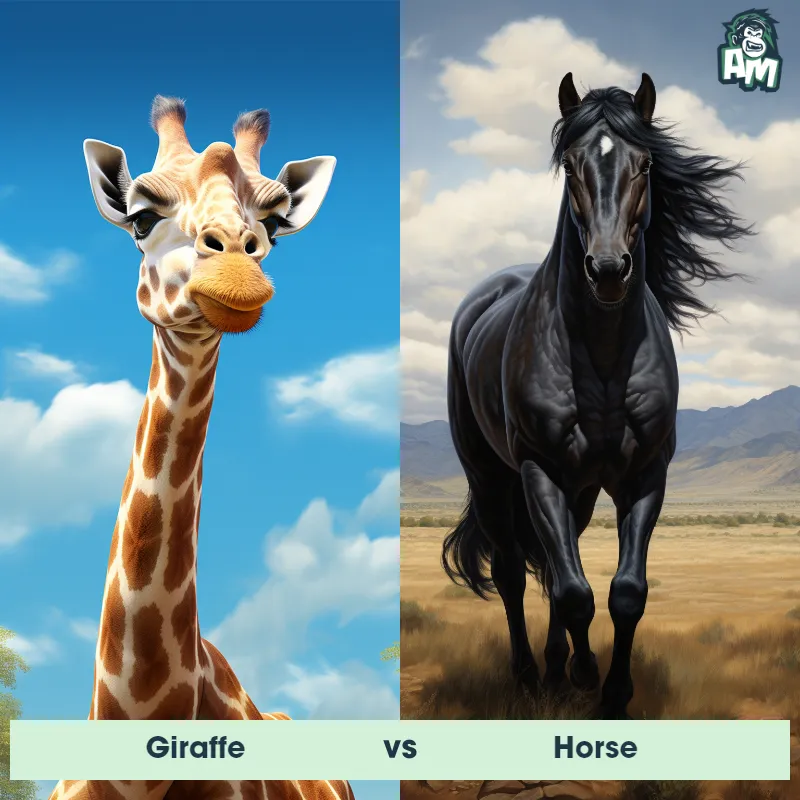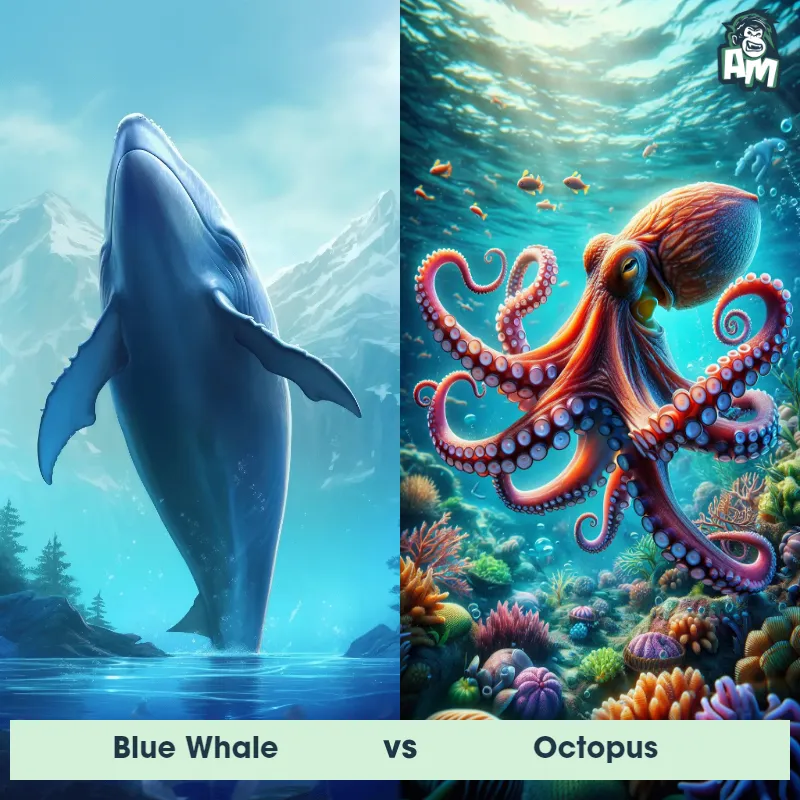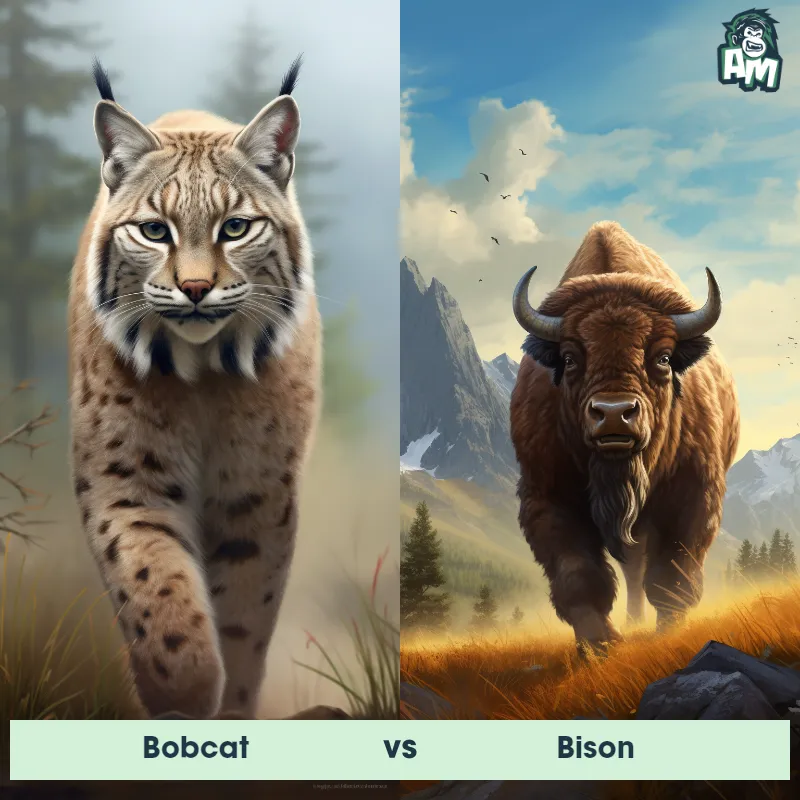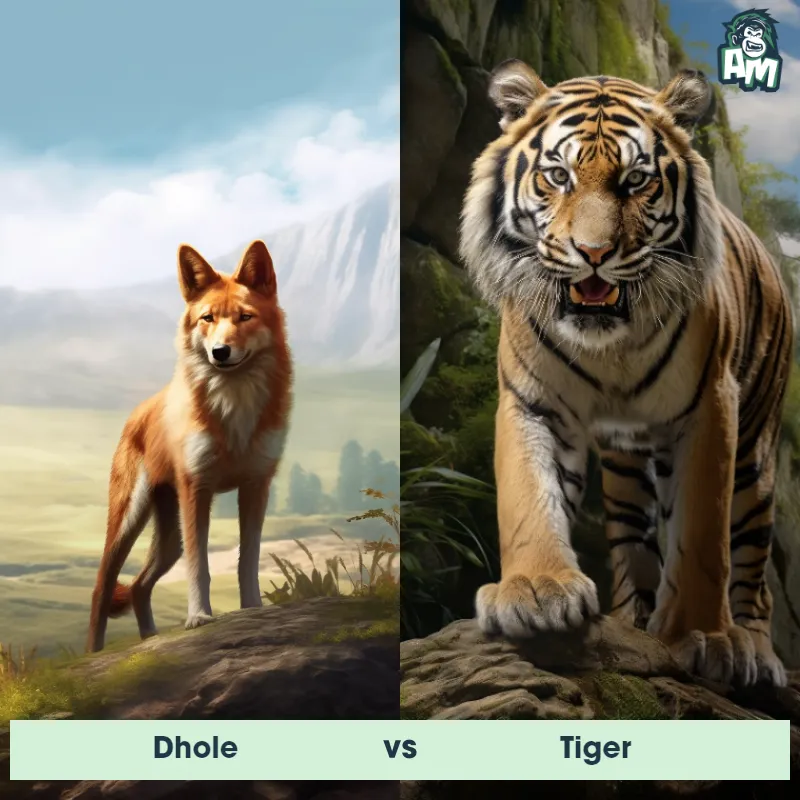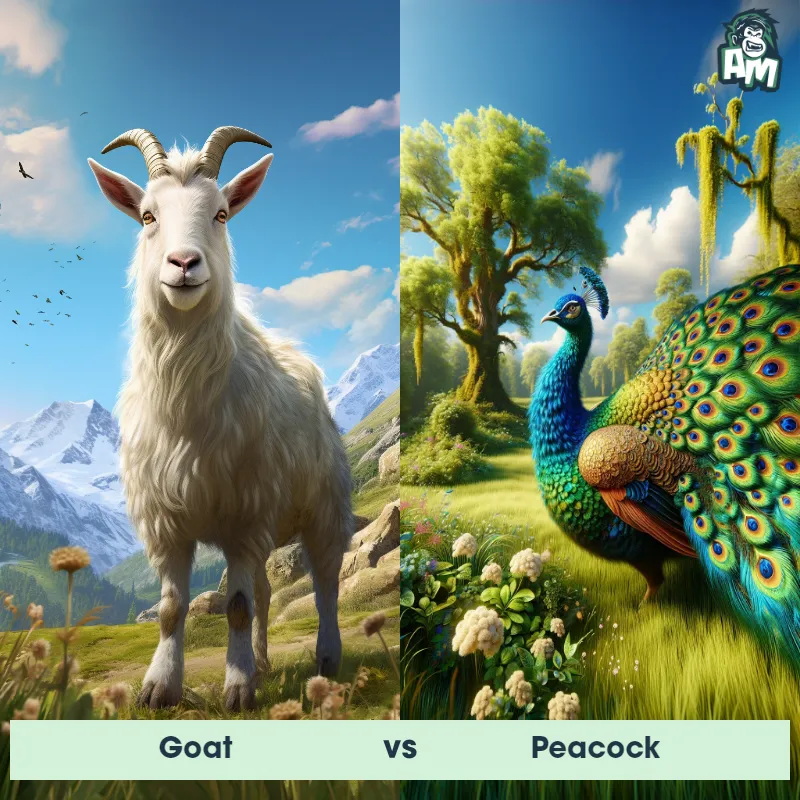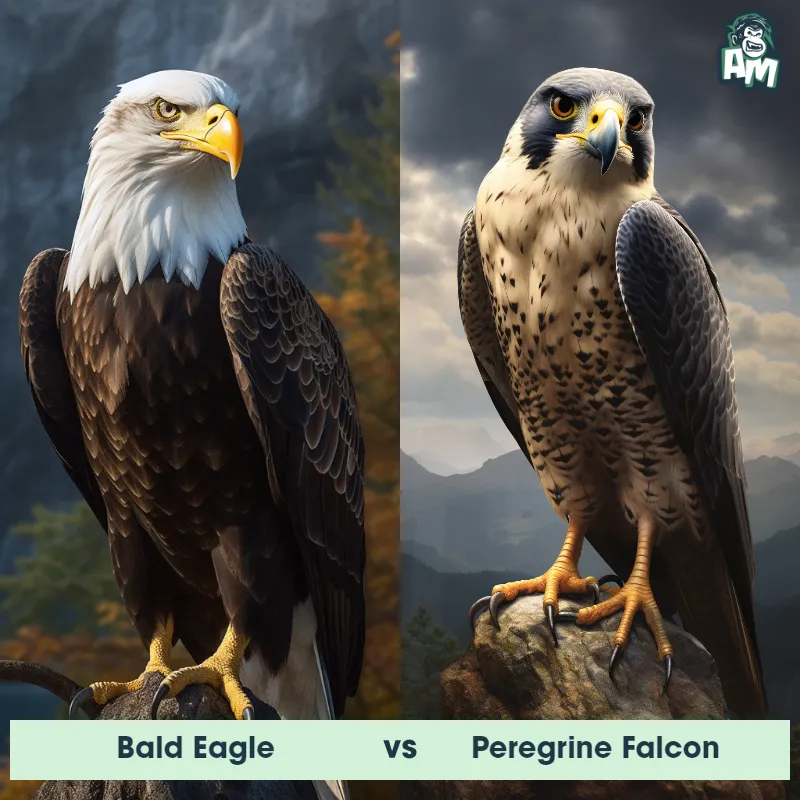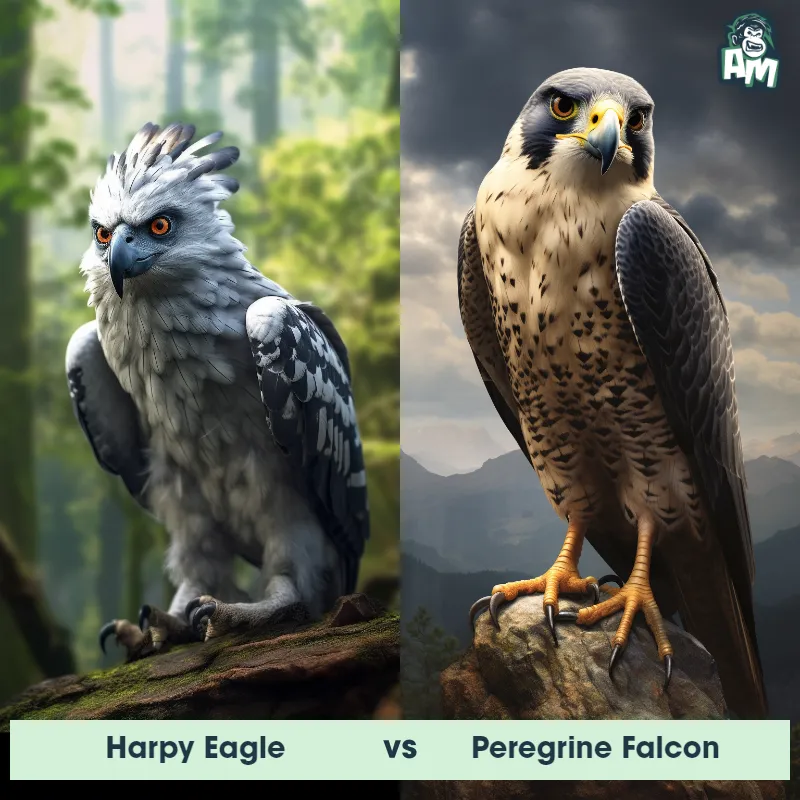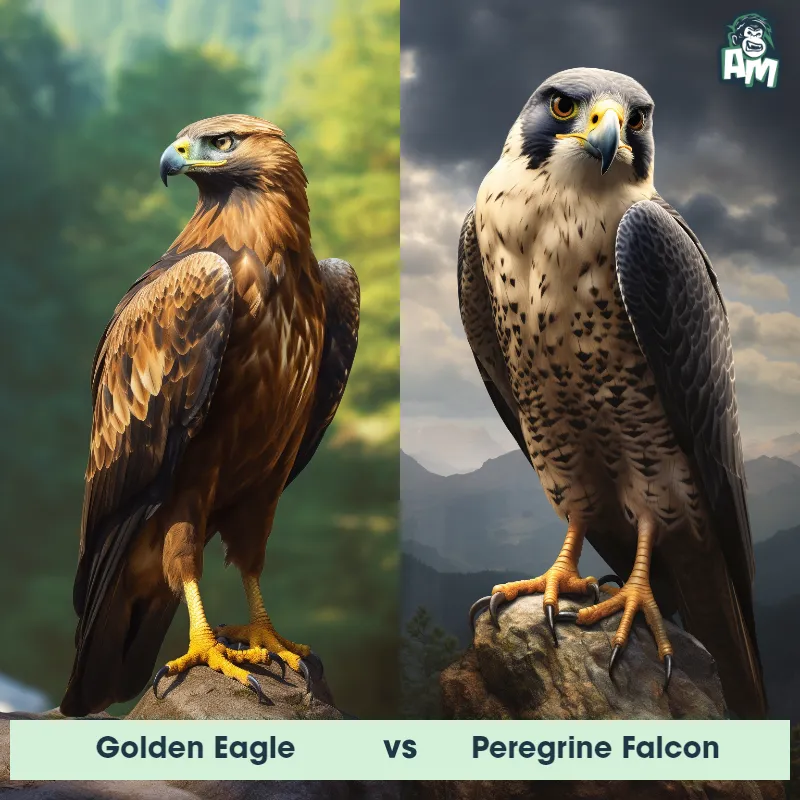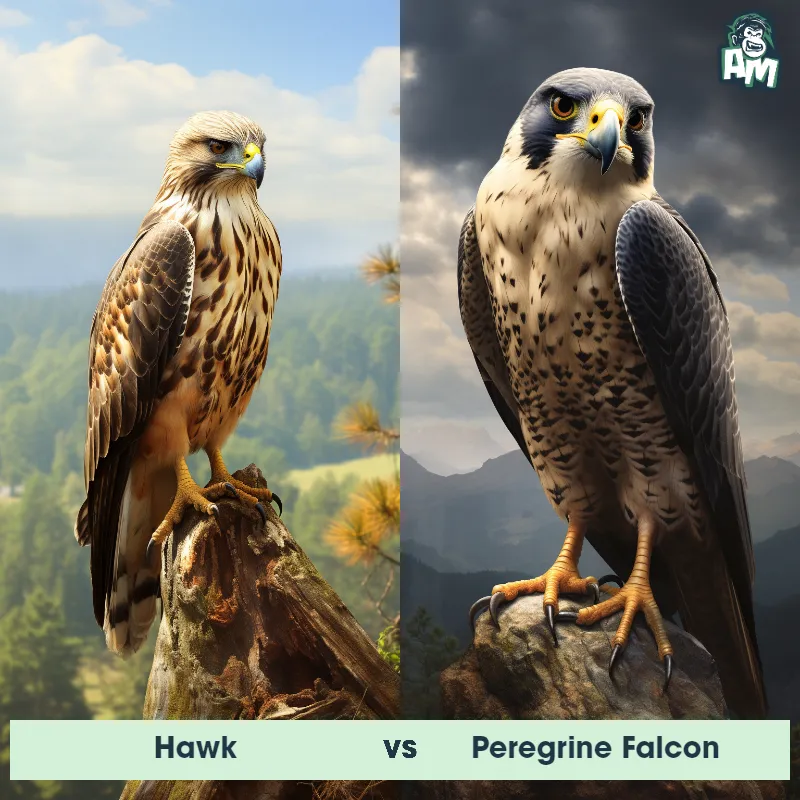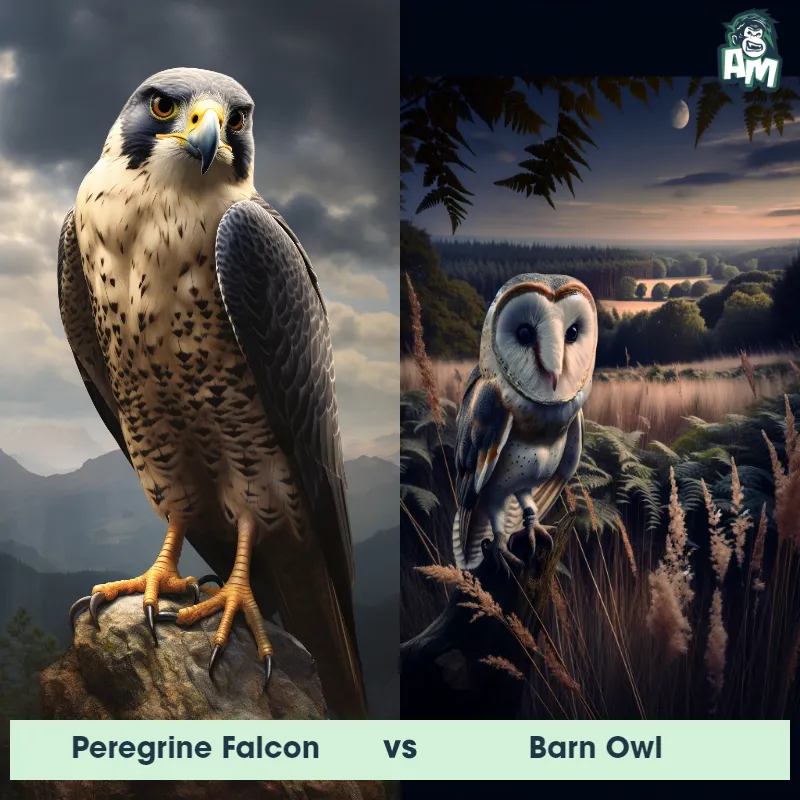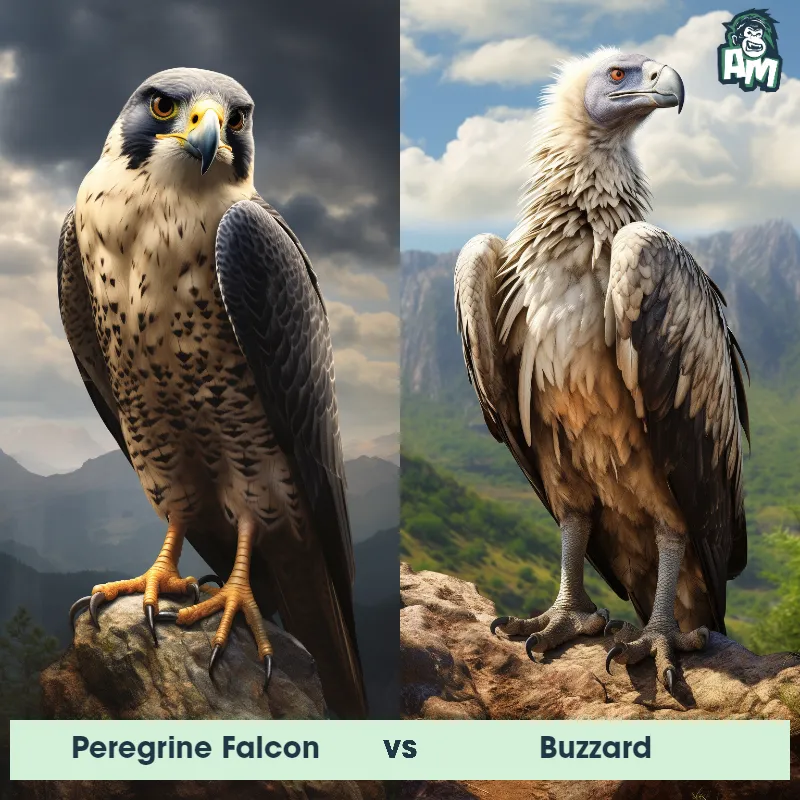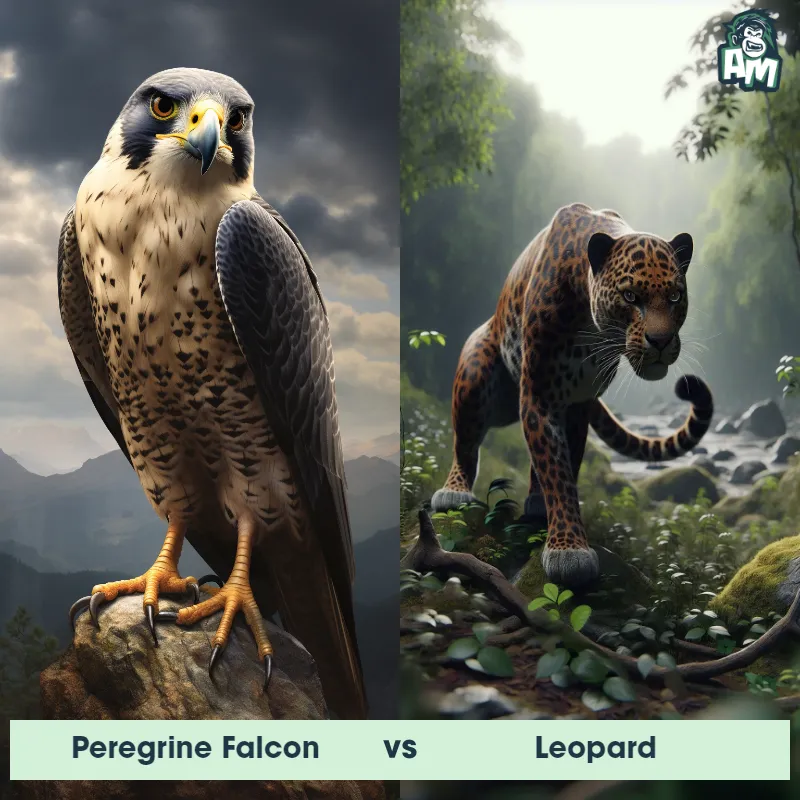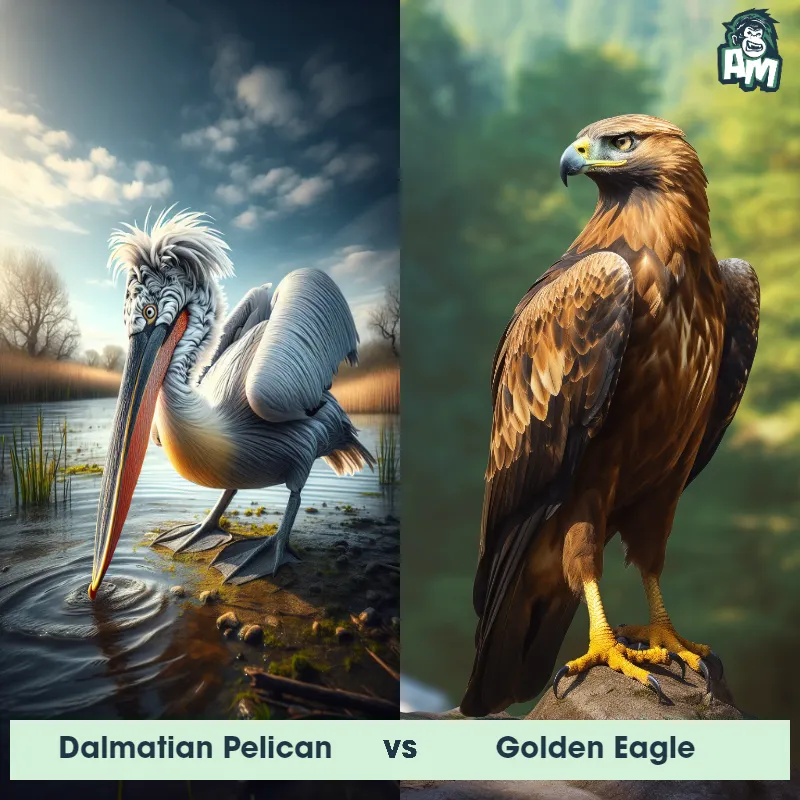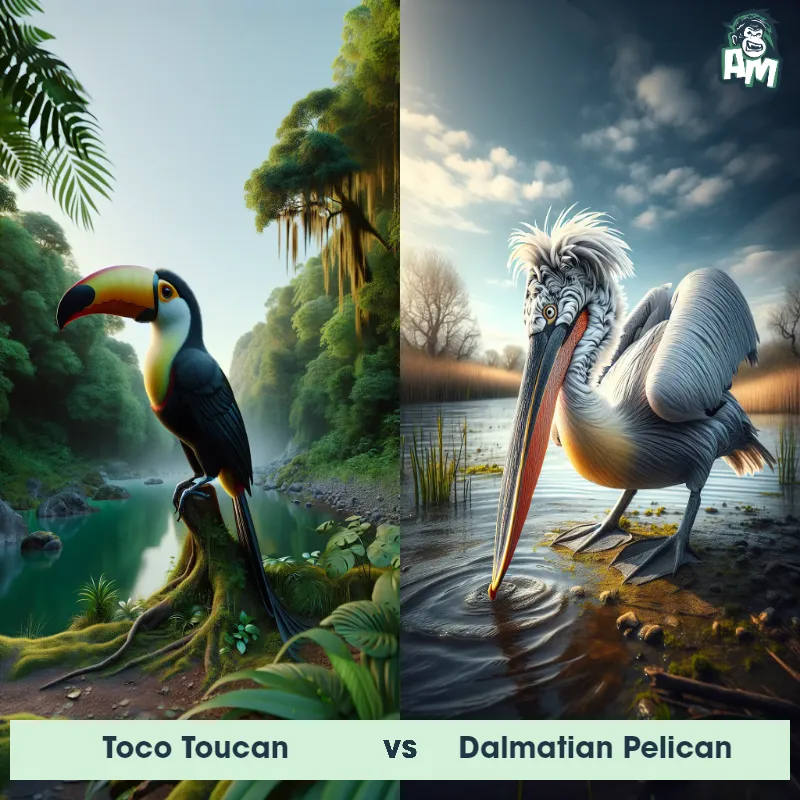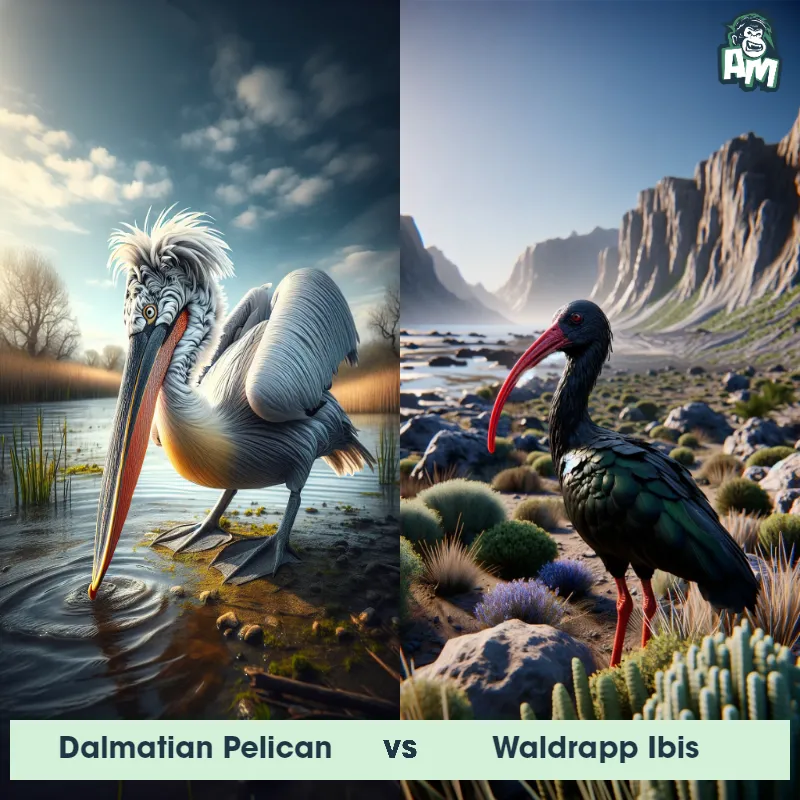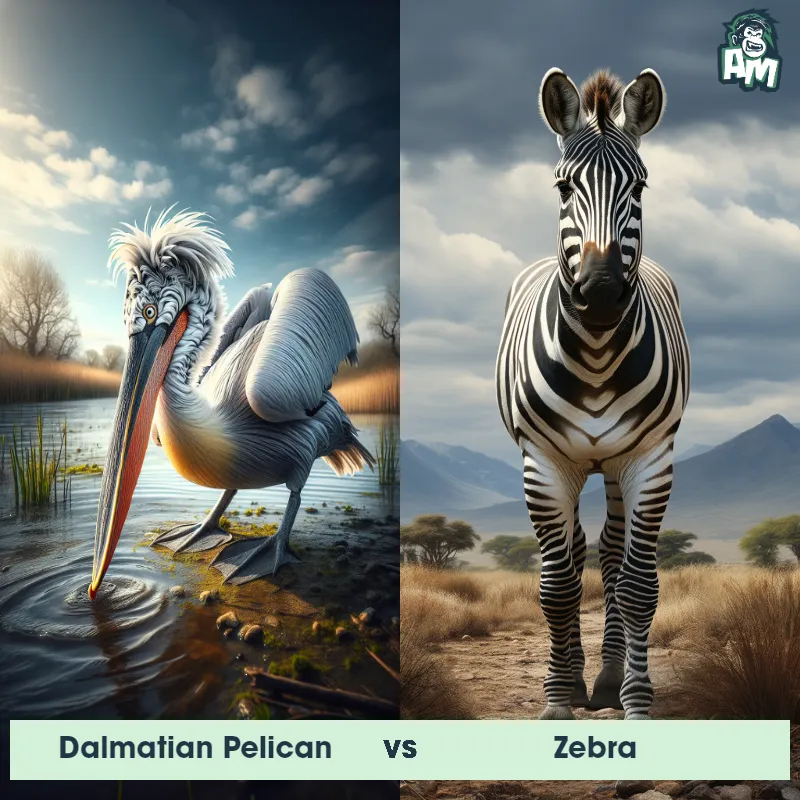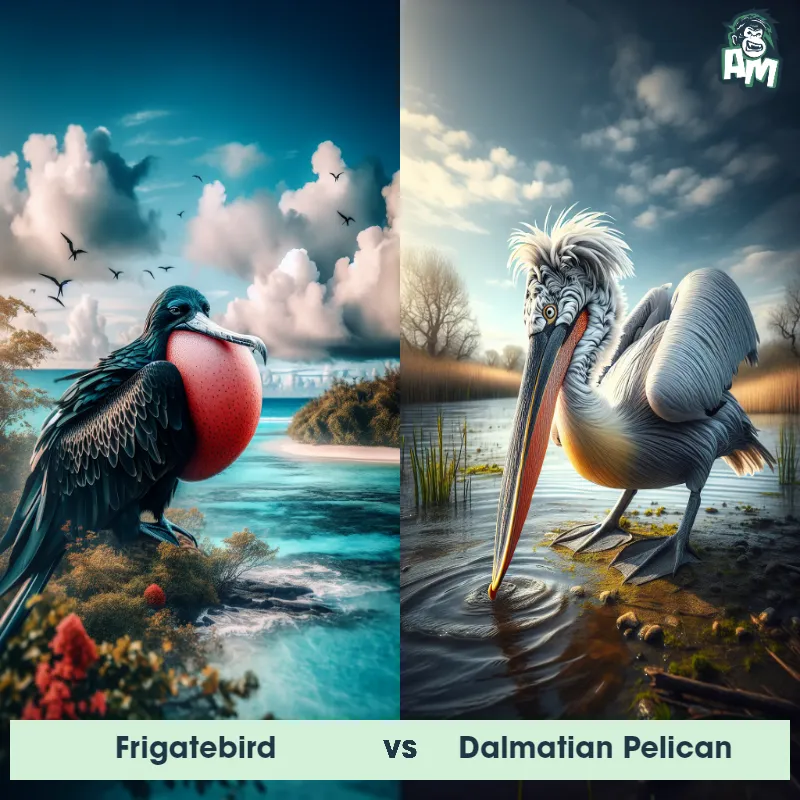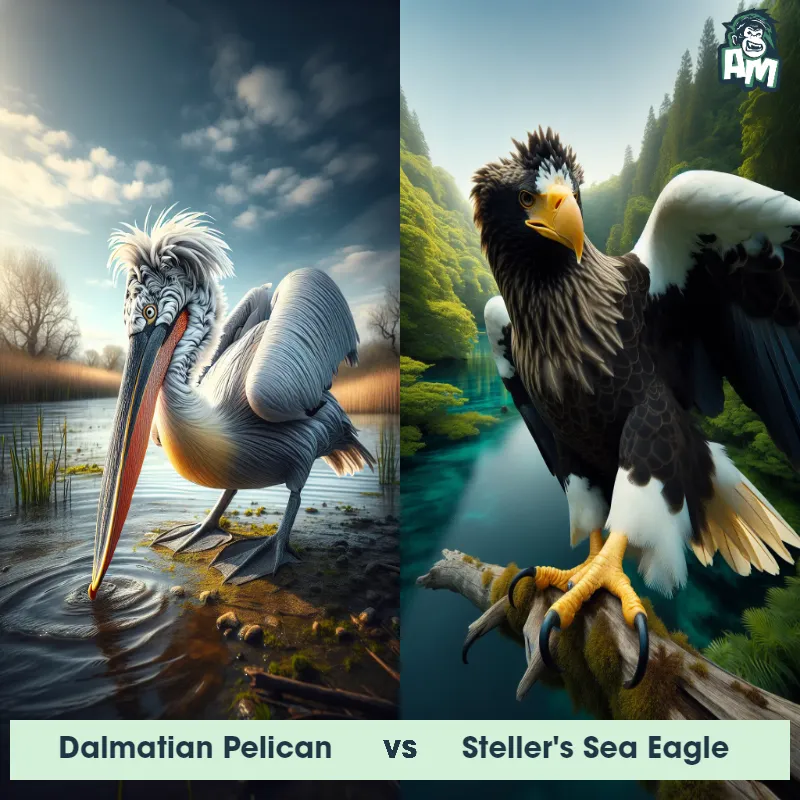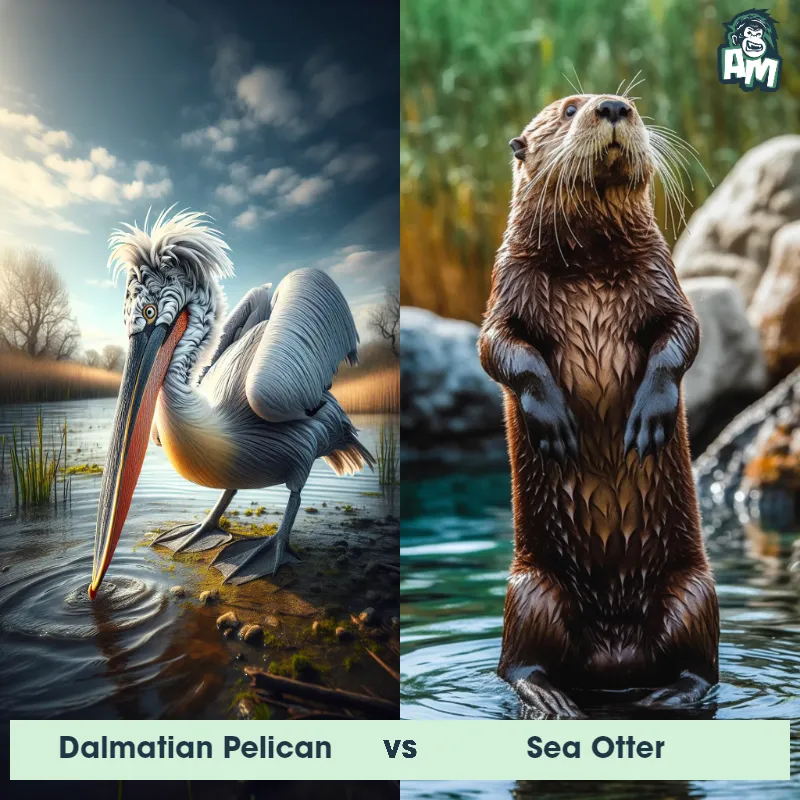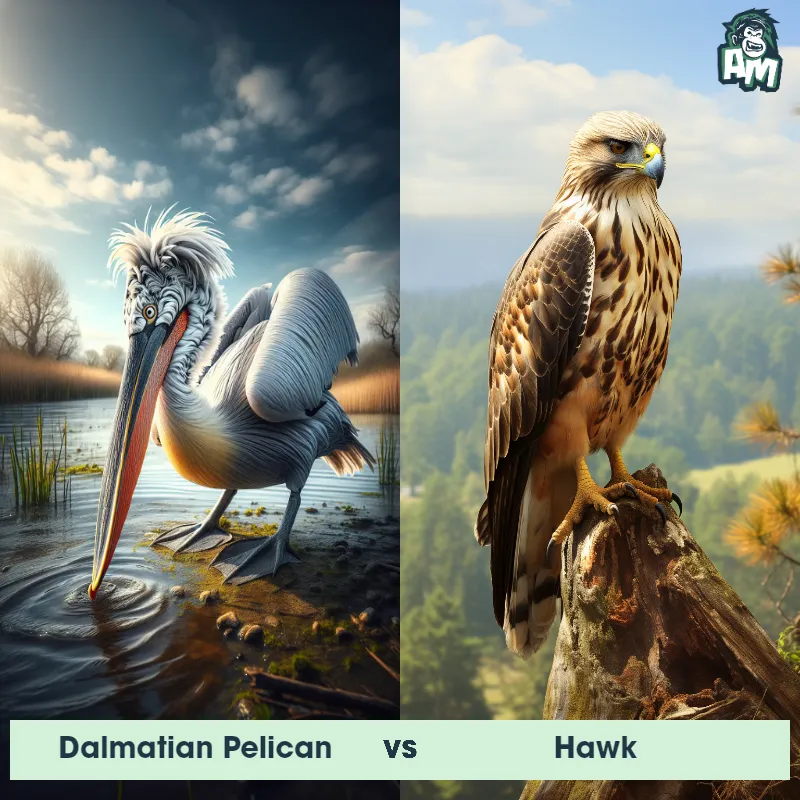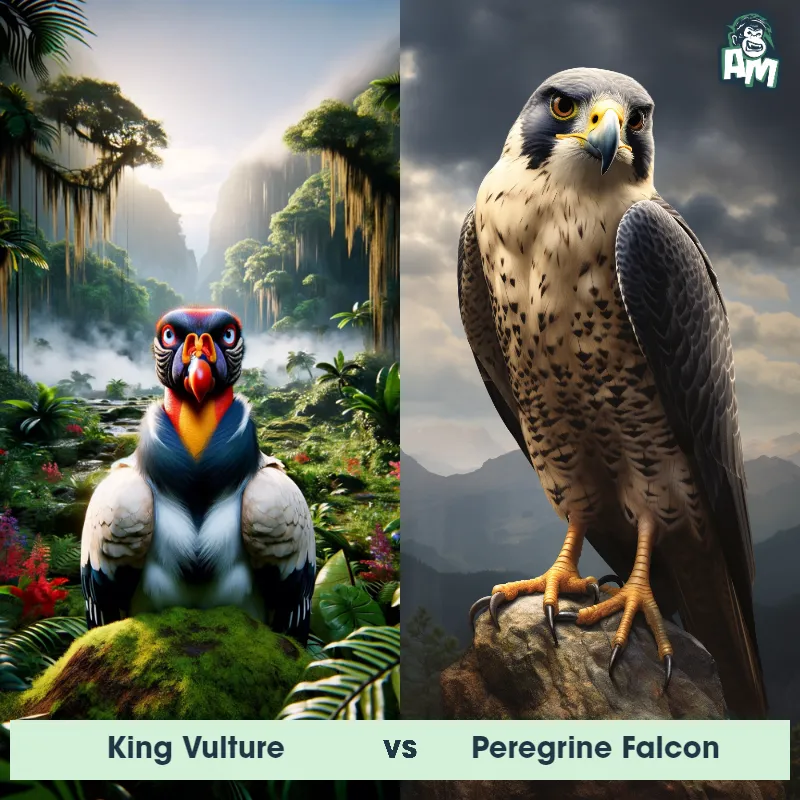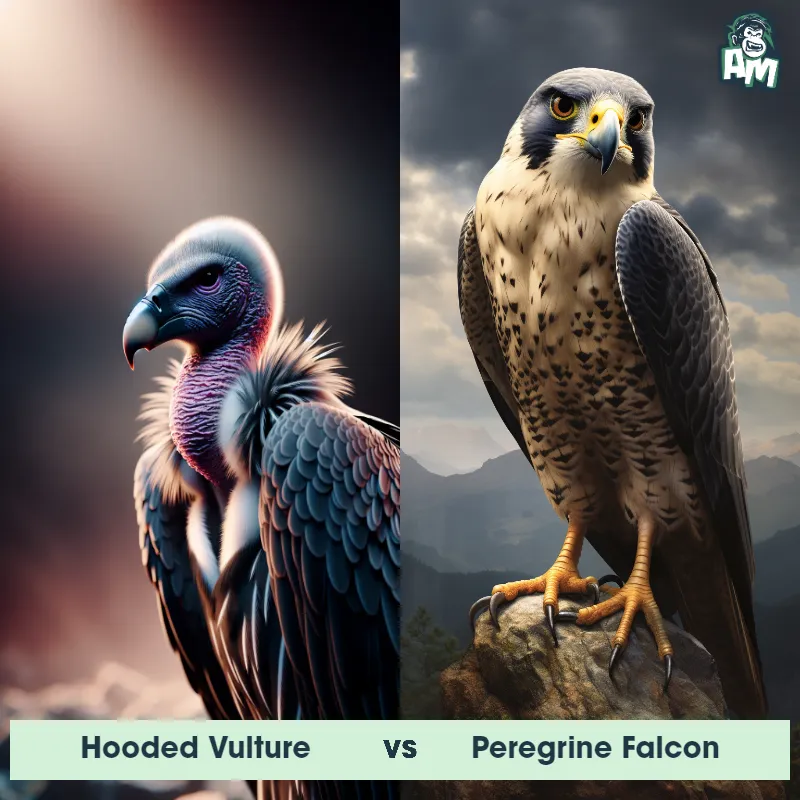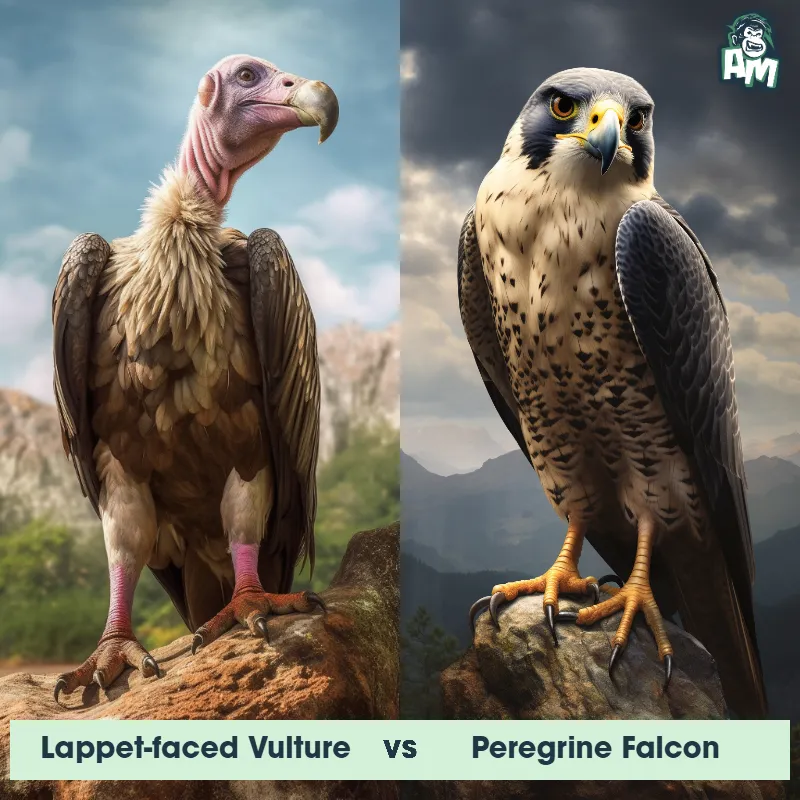Dalmatian Pelican vs Peregrine FalconSee Who Wins

Welcome to today's epic matchup between the Dalmatian Pelican and the Peregrine Falcon. These two fierce creatures are ready to battle it out in three rounds of intense combat. Let's see who will come out on top in this thrilling showdown!
Contender 1: Dalmatian Pelican
The Dalmatian Pelican is one of the largest pelican species in the world, known for its impressive size and beautiful appearance. It has a white body with distinctive black feathers on its back, tail, and wings. With a wingspan of up to 3.5 meters, it is an excellent flyer and can soar gracefully through the air. This pelican species has a large, prominent beak with a yellowish pouch that can hold up to 15 liters of water, allowing it to scoop up fish and other prey from the water efficiently. Interestingly, during breeding season, their beaks turn a vibrant shade of orange.
Fun Fact: The Dalmatian Pelican has an unusual breeding behavior where they form large colonies and usually nest on remote islands or wetlands. These colonies can contain as many as hundreds of pairs, making them an impressive sight.
Contender 2: Peregrine Falcon
The Peregrine Falcon is a raptor known for its speed and hunting prowess. It has a sleek body with long, pointed wings and a short tail, making it well-suited for high-speed pursuits. Its upper body is a bluish-gray, while its underparts are pale with darker spots, and it has a distinctive black "hood" and sideburns. Adult Peregrine Falcons have a body length of 34 to 58 cm and a wingspan from 74 to 120 cm. This bird is found all over the world, from the cold, harsh Arctic tundra to the warm desert regions.
Fun Fact: Peregrine Falcons are renowned for their incredible diving speed, which can exceed 240 miles per hour, making them the fastest animals in the world.
Matchup Stats
| Dalmatian Pelican | Peregrine Falcon | |
|---|---|---|
| Size | Up to 1.8 meters (5.9 feet) in length | 13.4 to 22.8 inches (34 to 58 cm) in length |
| Weight | Up to 12 kilograms (26.5 pounds) | 1.1 to 3.3 lbs (0.5 to 1.5 kg) |
| Speed | 31mph (50km/h) | 240 mph (386 km/h) |
| Key Strength | Powerful beak and large size | Incredible speed and strong, sharp talons |
| Biggest Weakness | Slow movement on land | Less effective in close-quarters combat due to preference for high-speed pursuits |
Current Votes
Dalmatian Pelican vs Peregrine Falcon
See Who Wins
View More Matches
Looking For More?
Similar Matches
Scientific Stats
| Dalmatian Pelican | Peregrine Falcon | |
|---|---|---|
| Scientific Name | Pelecanus crispus | Falco peregrinus |
| Family | Pelecanidae | Falconidae |
| Habitat | Freshwater habitats such as lakes, rivers, and marshes | Wide variety including coastlines, mountains, cliffs, cities |
| Geography | Southeast Europe, Asia, and China | Worldwide, from Arctic tundra to desert regions |
| Diet | Fish, frogs, crustaceans, and small birds | Primarily birds, occasionally small mammals |
| Lifespan | 10 years - 15 years | 8 years - 15 years |
Key Differences between Dalmatian Pelican and Peregrine Falcon
- Color: The Dalmatian Pelican has predominantly white plumage with black flight feathers, while the Peregrine Falcon has a gray-blue upper body and white underparts.
- Social behavior: Dalmatian Pelicans are often seen in large flocks, especially during breeding season, while Peregrine Falcons are solitary birds or may form mated pairs.
- Hunting technique: Dalmatian Pelicans are primarily fish-eaters and use their large bills to scoop up prey from the water, whereas Peregrine Falcons are skilled aerial hunters that dive at high speeds to catch birds in flight.
- Habitat: Dalmatian Pelicans are typically found in wetland habitats such as lakes, rivers, and marshes, while Peregrine Falcons prefer open spaces like cliffs, tundras, and cities.
- Bill shape: The Dalmatian Pelican has a long and massive bill with a yellow-orange pouch, whereas the Peregrine Falcon has a hooked beak that is ideal for tearing apart prey.
- Size: The Dalmatian Pelican is significantly larger than the Peregrine Falcon, with a wingspan that can reach up to 3 meters compared to the falcon's wingspan of around 1 meter.




